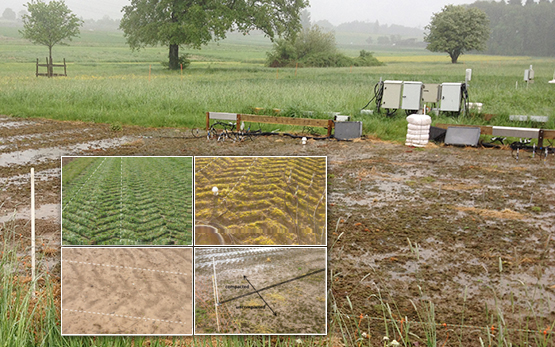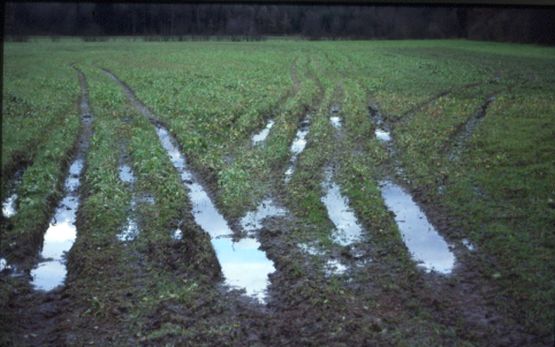Agroscope experts are conducting long-term trials to learn how high the natural regeneration potential of the soil is, how quickly a soil recovers after compaction, and what processes are particularly important here.
The passage of agricultural vehicles can result in instantaneous soil compaction, with decades-long adverse impacts on natural soil functions, including impeded water infiltration and reduced crop productivity. Modern trends towards ever larger and heavier farm vehicles and the intensification of agriculture add to the pressure on soil resources, thus aggravating the threat of soil compaction.
We have yet to fully document and disentangle the mechanisms and rates of soil recovery after compaction; however, such information is critical for assessing the real agronomic and ecological costs of soil compaction, and for devising strategies for accelerated recovery and sustainable soil management.
A recently published article in the Soil Science Society of America Journal reports on research conducted at a long-term soil structure observatory (SSO) at Agroscope Reckenholz near Zurich, Switzerland. This unique field experiment aims to monitor how quickly soil structure recovers following different degrees of compaction and surface cover (bare fallow, temporary ley and crop rotation). Two years after the compaction event, soil physical properties had not fully recovered. Soil air- and water permeability were drastically reduced by compaction, but improved over time due to the creation of new soil macropores by earthworms and roots. By contrast, total soil porosity and bulk density remained unchanged, suggesting inadequate decompaction.
The study suggests that recovery proceeds from the soil surface downwards and from biopores into compacted soil volumes, and demonstrates that soil structural recovery following compaction is a lengthy process.







